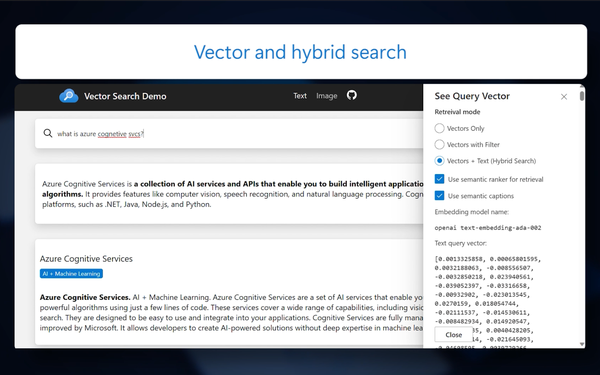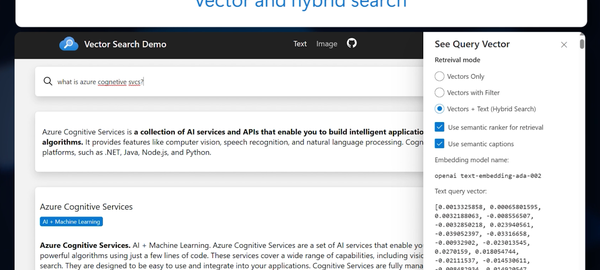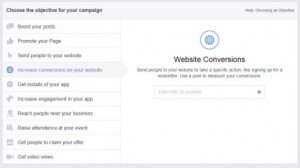Microsoft Launches Vector Search In Preview

Microsoft at its annual Inspire conference announced the availability of Vector search, a technique for finding related objects.
In preview through Azure Cognitive search, Vector Search uses machine learning to capture the meaning and context of unstructured data, such as images and text. The idea is to make search faster.
The enterprise retrieval cloud service powers the next generation of applications based on large language models (LLMs), as well as plugins for ChatGPT and Azure OpenAI service.
Azure Cognitive Search helps developers build search experiences and generative artificial intelligence (AI) apps that combine LLMs with enterprise data. The tool allows developers to build search functions into any mobile or search application in an organization or as part of software as a service (SaaS) application.
Vectors enable machine to structure and make sense of data—identify that words such as dog and cat are identified as close words. The search function can be used to search for text, images, videos, songs, or any other form of unstructured data.
Vector Search is also called Similarity Search because it retrieves images, songs, videos, documents and more that are similar in semantic and context, according to Global Equities Research.
It also offers a sophisticated re-ranking system powered by Bing in one integrated solution, and the ability to build applications to generate personalized responses in natural language.
Elsewhere at Microsoft, Vector search integrates with Azure AI, allowing customers to build search-enabled, chat-based applications using the Azure OpenAI Service, and then convert those images into vector representations using Azure AI Vision for accurate text-to-image and image-to-image search experiences.
(4)







